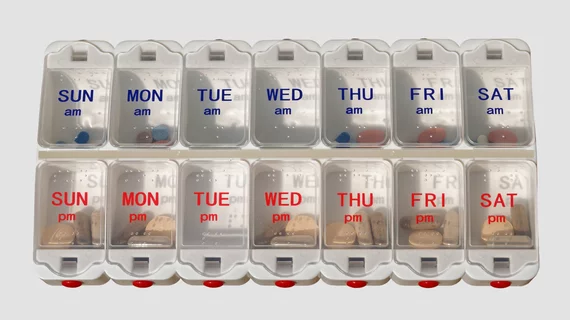Baseline statin use appears to be associated with a significant reduction in major adverse cardiac events — including heart attacks and death — for people with non-obstructive coronary artery disease (CAD), a new study found that was published in Radiology: Cardiothoracic Imaging.[1]
Aspirin, on the other hand, did not reduce the occurrence of heart attacks, death, or other adverse events for people with non-obstructive CAD, and was not associated with any improvement in clinical outcomes. The study used coronary computed tomography angiography (CCTA) as a first-line test to detect plaque in the vessels.
“While observational in nature, our data calls into question the value of initiating aspirin therapy following the diagnosis of non-obstructive coronary artery disease on a coronary CT angiography,” said study author Jonathan Leipsic, MD, professor and head of the Department of Radiology at the University of British Columbia in Vancouver, Canada in a statement.
A person diagnosed with coronary artery disease has a buildup of plaque in their veins that narrows the coronary arteries; it is considered “non-obstructive” when that narrowing is less than 50%. The study followed 6,386 participants over five years; 44% of whom had non-obstructive CAD, and 56% of whom had no detectable plaque buildup.
In participants with no plaque buildup, neither aspirin nor statin improved clinical outcomes.
The study also examined overall mortality rates for the two groups of participants, finding that mortality for the non-obstructive CAD group (10.6%) was significantly higher than for the group with no plaque buildup (4.8%).
Leipsic did note that in some instances, such as for patients with high-risk plaque or high plaque burden, aspirin may indeed be beneficial.
“Ultimately, further research is required to determine whether, and at what threshold, clinicians should consider prescribing aspirin for patients upon the identification of non-obstructive coronary artery disease on coronary CT angiography,” Leipsic said.
Read more about the April 2022 USPSTF update on its stance on aspirin use to prevent CVD, sees no benefit for patients 60 or older.
Related Cardiac CT Coronary Evaluation Content:
VIDEO: Office-based cardiac CT and FFR-CT offer a new business model
Expert panel recommends coronary CTA as first choice when evaluating for stable CAD
VIDEO: Cardiac CT now recommended as a front-line chest pain assessment tool — Interview with Leslee Shaw, PhD
Cardiologists identify 162 genes responsible for coronary heart disease
PHOTO GALLERY: Duly Health adopts outpatient cardiac CT as a standard of care
